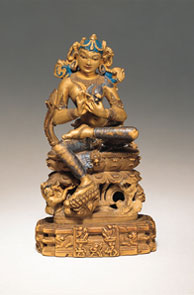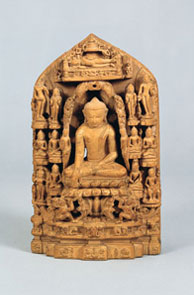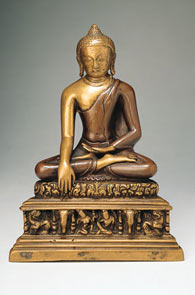
    


Jane Casey's essay re-evaluates three works of art in the Asia Society's collection and illustrates how important it is to look at a work of art from the perspective of connoisseurship, that is, examining the finest details and most minute technical aspects of a work. This type of looking and scholarship is particularly important when discussing Indian and Tibetan objects from the eighth through twelfth century, which was a formative period for Tibetan art yet one for which there is little textual information available. Contextualizing the objects in their original settings is another approach to decoding a work of art and is the perfect complement to connoisseurship. Casey's discussion of the concept of pilgrimage copies establishes a solid ground for the examination of the details of a group of several dozen images.
One of the exciting aspects of new scholarly research in the field of Asian art is that it often turns over long-held beliefs or opinions, which may not have been examined for decades because inscriptions were ignored or the original context unexplored. The Asia Society is pleased to be able to present new scholarship on our collection and we invite responses from our readers regarding the redating and reattribution of the sculptures presented here.
|

